
Environment
17 Feb 2022
Plant Science welcomes new Field Chief Editor
Meet the new Field Chief Editor of Frontiers in Plant Science

Environment
17 Feb 2022
Meet the new Field Chief Editor of Frontiers in Plant Science

Environment
26 Jan 2022
By Mischa Dijkstra, Frontiers science writer Roof truss of the Chapelle Saint-Denis in Marmoutier in Alsace, France, from the 16th century. Credit: Willy Tegel Scientists have reconstructed European socio-economic cycles between 1250 and 1699 in unprecedented detail, by using the power of tree rings to reveal the exact age of more than 54,000 pieces of timber from historical buildings. Tracking building activity across the years, estimated from felling year of timber from historical buildings, can yield an unrivaled economic record for premodern Europe. That is the conclusion from a vast study by a consortium of scientists across Europe, published in Frontiers in Ecology and Evolution. By dating timber from tree rings – to the exact year of felling – from historical buildings, and statistically analyzing the distribution of building years, the authors deduce multiple periods of socio-economic prosperity and downturn between 1250 and 1699, independent from other historical data. Crucially, they show how different European regions were differentially affected, and at different times. When historical records are too scant to reconstruct large-scale demographic and societal changes, environmental measures can be used. For example, numbers of shipwrecks have been used in past research to chart trade intensity, pollen to reconstruct agricultural […]
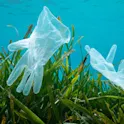
Environment
10 Jan 2022
More than half of plastics in Mediterranean marine protected areas originated elsewhere, finds a new study in Frontiers in Marine Science

Environment
17 Dec 2021
By Mischa Dijkstra, Frontiers science writer Image credit: Anna Ok / Shutterstock.com Scientists use complex mathematical modeling of sea states, sea level rise, and local geography to predict the permanent loss of between 56 and 65% of the current area of sandy beaches in the Balearic Islands by the end of the 21st century, depending on the global warming scenario. During extreme weather conditions such as the strongest storm surges with the highest waves, between 84 and 86% of the beach area will be flooded. The impact of the climate crisis on coastal areas has been well documented, but new research has shown the impact it may have on the beaches found on the Balearic Islands in the north-western Mediterranean. Findings published in Frontiers in Marine Science showed that the archipelago – heavily reliant on tourism – could lose most of its beaches. “Much of the income of touristic regions in the Mediterranean comes from beach and sun tourism: more than 25% in the case of the Balearic Islands. This means that it is essential to predict the fate of these beaches under climate change,” said first author Miguel Agulles, a PhD student at the Oceanographic Center of the Balearic […]

Environment
19 Nov 2021
With all eyes on the UN Climate Change Conference (COP26) this month, we have curated a list of our best Research Topics addressing the four goals of the conference. Explore collections on securing net zero and keeping 1.5 degrees within reach, adapting to protect natural habitats, mobilizing climate finance, and tackling the crisis through collaboration.
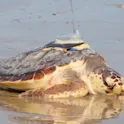
Environment
26 Oct 2021
By Tania Fitzgeorge-Balfour, Science writer A tracked loggerhead turtle on the beach with satellite tracker attached to its shell. Image: Oceane Cottier Aquarium La Rochelle SAS Turtle habitat boundaries should be updated to include European waters, suggests a new study tracking stranded turtles rescued from the French coast. Their movements after release back into the Bay of Biscay appear related to their size, with larger individuals swimming westwards towards their birth home in the US or Africa, and smaller individuals potentially trapped in the region for winter. These findings will inform strategies to ensure stranded turtles survive after their release. The documented habitat boundaries of the loggerhead, Kemp’s ridley and green turtles are questioned by a new study suggesting that stranded turtles rescued from European French Atlantic and Channel waters could be visiting the area to forage for food. Published in Frontiers in Marine Science, satellite tracking data reveals that while some turtles may be able to return home, after their rehabilitation and release to Florida in the US, or Cape Verde off the African coast, younger individuals are at risk of being trapped in the region. “Stranded turtles that were tracked swimming westwards presumably towards their birth homes, after […]

Environment
06 Oct 2021
By K.E.D Coan, science writer Snow buntings in winter. Image: Mircea Costina/Shutterstock.com There is still much to learn about how Arctic migratory birds adjust their physiology during different phases of their life. For example, between winter and summer habitats, or during migration. A recent study published to Frontiers shows the first evidence that snow buntings keep their winter traits through migration. These findings may help researchers understand why snow bunting populations are declining, as well as expanding what is known about how buntings, and other species, endure Arctic weather. Snow buntings are equipped for winter even while migrating to their breeding grounds, shows a recent study in Frontiers in Ecology and Evolution. There have been major declines in biodiversity around the world and the snow bunting population has dropped 60% over the last 45 years. The specific cause of this drop is unknown, and this study is among the first to look at the physiological changes that occur during the different life stages of this species (ie between winter and migration). This work provides clues into the future survival of snow buntings, as well as new insights into how species generally endure the harsh cold of the Arctic. ► Read original […]
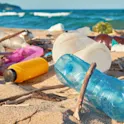
Environment
04 Oct 2021
Research in Frontiers in Marine Science reveals how much plastic debris is currently floating in the Mediterranean Sea
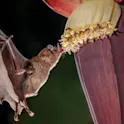
Environment
23 Sep 2021
By Tania Fitzgeorge-Balfour, science writer Pallas’s long-tongued bat (Glossophaga soricina) feeding on banana flowers. Image credit: Julian Schneider New research reveals there is a stark difference between the gut bacteria of nectar-feeding bats foraging in conventional monoculture banana plantations and those bats who forage in their natural forest habitat or organic plantations. This is the first study to show an association between habitat alteration, sustainable agriculture and the gut microbiota of wildlife. Nectar-feeding bats foraging in intensively managed banana plantations in Costa Rica have a less diverse set of gut microbes in comparison to bats feeding in their natural forest habitat or organic plantations, reveals new research published today in Frontiers in Ecology and Evolution. This the first study to show an association between habitat alteration, sustainable agriculture and the gut microbiota of wildlife. “Organic and conventional monoculture banana plantations both provide a very reliable food source for some nectar-feeding bat species. However, bats foraging in the intensively managed plantations had a reduced diversity of gut microbes, which could be a sign of gut dysbiosis, an unhealthy imbalance of its microbial symbionts,” explains Priscilla Alpízar, first author of this study, a doctoral student at the Institute of Evolutionary Ecology and […]
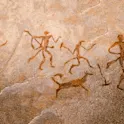
Environment
24 Jun 2021
By Colm Gorey, Frontiers science writer/Prof James Serpell, University of Pennsylvania Prof James A Serpell, University of Pennsylvania. Image: University of Pennsylvania Two distinctly different stories have been created to explain how fearsome, wild wolves were first domesticated by humans, according to Prof James A Serpell of the University of Pennsylvania and the Wallis Annenberg PetShape Leadership Institute. However, in the open access journal Frontiers, he recently published a paper investigating the truth of these claims. Despite being considered mankind’s best friend, the ancestors of modern dogs were a lot less welcoming to human owners. However, trying to trace the timeline of when early humans first domesticated wild wolves to serve their needs has proven difficult. One of the most prevalent origin stories in scientific literature suggests the ‘commensal scavenger hypothesis’. This posited that wolves essentially domesticated themselves by invading ancient human settlements in search of animal remains and other edible waste discarded by hunter-gatherers. Over time, tolerance by humans gave a selective advantage to the bolder, less fearful wolves, which then diverged from the ancestral population as they adapted to the new scavenging niche. An alternative hypothesis – sometimes referred to as the pet keeping or cross-species adoption hypothesis […]
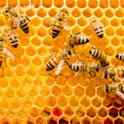
Environment
17 May 2021
World Bee Day 2021’s theme is Bee engaged – Build Back Better for Bees, which focuses on finding ways to restore, support and enhance the role of pollinators. Check out our curated list of the best open Research Topics addressing these issues!

Environment
21 Apr 2021
Earth Day 2021’s theme is Restore Our Earth™, which focuses on natural processes, emerging green technologies, and innovative thinking that can restore the world’s ecosystems. Check out our curated list of the best Research Topics addressing these issues!
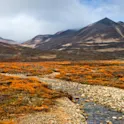
Environment
15 Apr 2021
Only between 2% and 3% of the Earth’s terrestrial surface can be considered ecologically intact, according to a new study published in Frontiers in Forests and Global Change

Environment
13 Apr 2021
Crop rotations with beans and peas offer more sustainable and nutritious food production, finds new study in Frontiers in Sustainable Food Systems
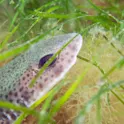
Environment
04 Mar 2021
By Suzanna Burgelman, Frontiers science writer Dogfish between seagrass. Image: Frogfish Photography The United Kingdom (UK) could have lost as much as 92% of historic seagrass meadows, a new study shows. These seagrass meadows are an essential part of healthy marine ecosystems, supporting the UK’s fish stocks, and helping to absorb and trap carbon from the atmosphere. The research highlights an urgent need to protect and restore current and degrading seagrass meadows. The loss of seagrass in the waters around the UK is much higher than previously estimated. A new study published in Frontiers in Plant Science concludes that, with high certainty, at least 44% of the UK’s seagrasses have been lost since 1936, of which 39% has been since the 1980s. This study is one of the first of its kind to bring together seagrass data from diverse sources and give a systematic estimate of the current and historic extent of seagrass, as well as seagrass loss in the UK. The study was a collaboration between researchers at University College London, Kings College London, and Swansea University. Read original article Download original article (pdf) Seagrasses as climate change superheroes Nature-based solutions are essential to mitigate the effects of the […]
Get the latest research updates, subscribe to our newsletter